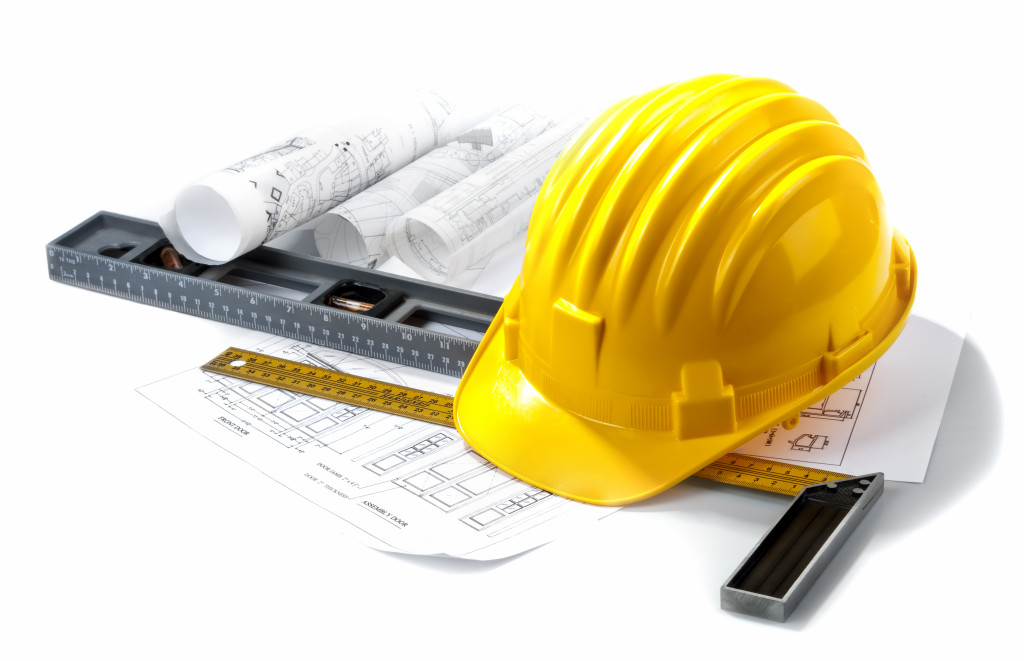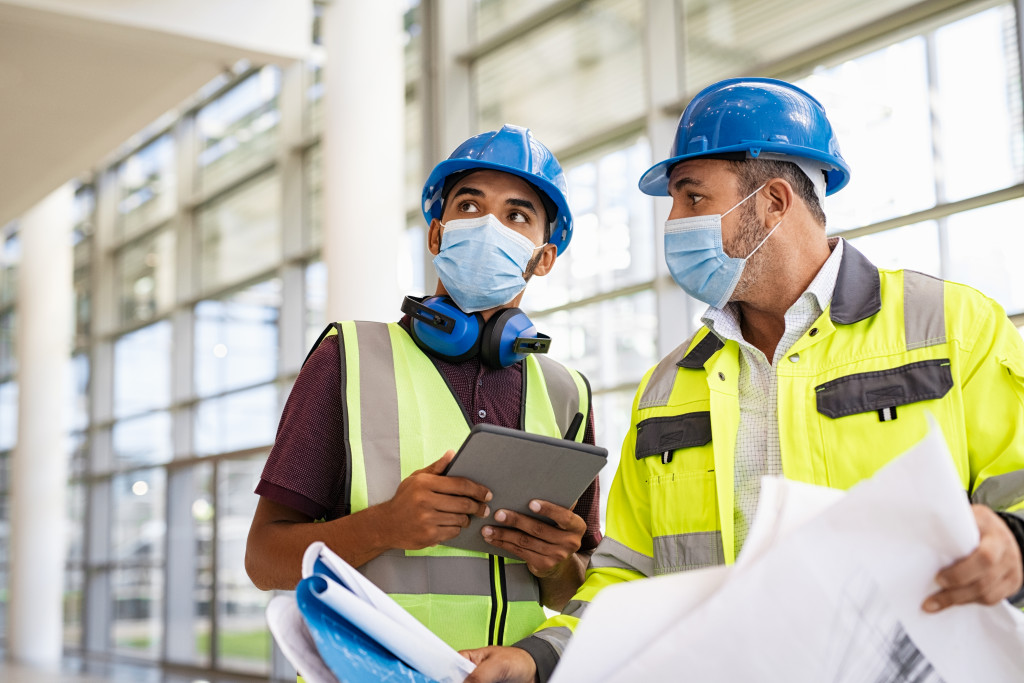- Hi-vis clothing can enhance visibility and comfort during rainy conditions and is often a legal requirement for workers.
- Hard hats are essential in preventing head injuries from falling debris and other hazards.
- Safety glasses and goggles are crucial gears in protecting workers from eye injuries.
- Dust masks and respirators must be provided for the protection of workers’ lungs.
Construction businesses are responsible for the safety of their workers and must take every precaution to ensure that they have the necessary equipment to keep them safe on the job. By doing these suggestions, construction businesses can help reduce accidents and injuries while creating a safer working environment for everyone involved.
Protective Gear
Protective gears are a necessary item for any construction worker. Ensuring all workers have appropriate protective gear that fits correctly and meets safety standards is important. Here are a few of the most important items:
High-visibility clothing
High-visibility clothing plays a crucial role in ensuring the safety of workers in construction businesses. This type of clothing is made from brightly colored fabrics with reflective stripes that enhance their visibility in low-light conditions.
The benefits of acquiring hi-vis Gore-Tex trousers are worth mentioning, as this enables workers to stay dry and comfortable during rainy or wet conditions. With their high-visibility properties and waterproof features, these trousers are a worthy investment in the safety and comfort of construction workers.
In addition to being a legal requirement for workers in many countries, hi-vis clothing is also essential in reducing the risk of accidental injuries and fatalities in construction sites. This is especially important in busy or obstructed areas where visibility is compromised. Employers should ensure employees are equipped with hi-vis clothing to improve workplace safety.
Hard hats

Hard hats are one of the most essential pieces of equipment for ensuring the safety of employees in construction businesses. These protective helmets protect workers from head injuries caused by falling debris, and other hazards typically found on construction sites. Hard hats are crucial because they can greatly reduce the risk of serious injury or even death on the job.
To ensure that these helmets provide adequate protection, selecting the right type of hard hat for the job at hand is important. Workers should also be adequately trained to recognize and respond to situational hazards. By investing in proper protective gear and employee training, construction businesses can reduce the risk of workplace accidents and ensure that their employees remain safe while on the job.
Safety glasses and goggles
In the fast-paced world of construction work, all workers must be equipped with the appropriate safety gear, including safety glasses and goggles. This protective eyewear is essential in safeguarding construction workers’ eyes from the risk of injury resulting from exposure to debris, dust, chemicals, and other harmful particles.
It is crucial to remember that even a minor eye injury can cause significant harm and permanent damage in some cases. Workers who neglect the use of safety glasses or goggles compromise their well-being and the entire team’s productivity. Therefore, investing in this protective eyewear should not be overlooked as it can prevent avoidable accidents and guarantee the safety of all workers on site.
Dust masks and respirators

Dust masks and respirators have become necessary equipment in the construction business. These are designed to protect the workers’ lungs from harmful particles, fumes, and dust from construction activities. Workers inhaling these particles can lead to serious health problems such as respiratory issues or cancer. Dust masks and respirators can also protect workers from hazardous gases and chemicals commonly used in construction sites.
As an essential tool for safety, construction companies must provide this equipment to their workers. The use of dust masks and respirators is beneficial for the workers’ well-being and the overall quality of construction work. Investing in proper gear can ensure proper ventilation, secure employee wellness, and maximize productivity.
Earplugs or earmuffs
In the construction industry, safety should be of utmost priority. With the constant noise and loud machinery used daily, hearing protection is necessary for anyone on the site. That is where earplugs or earmuffs come in handy. Earplugs are small, lightweight, and fit snugly inside the ear canal, while earmuffs cover the entire ear, providing a higher level of noise reduction.
Using either hearing protection equipment can help prevent hearing damage, including tinnitus and hearing loss, which can be irreversible. As essential equipment for safety, earplugs and earmuffs can mitigate the impact of loud noise on workers and even lead to a more productive and healthier work environment.
Fall protection systems
Fall protection systems are essential equipment for safety in construction businesses. The safety of workers is always a top priority, and fall protection systems are designed to prevent fall risks and keep workers safe. These systems include safety harnesses, safety nets, guardrails, and anchor points.
Without such systems, workers risk serious injuries or even death from falls. The importance of fall protection systems cannot be overstated, as falls are one of the primary causes of accidents and fatalities in the construction industry.
Moreover, employers have a legal obligation to provide a safe working environment for their workers, and failure to provide fall protection systems may result in severe penalties or even legal consequences. Therefore, construction businesses must invest in reliable and high-quality fall protection systems to ensure the safety and well-being of their workers.
These are just a few of the key items that construction businesses should invest in to ensure worker safety. By taking preventative measures, employers can cultivate a secure workplace for all workers and decrease the likelihood of accidents and injuries.